Paradox Interactive announced a number of things for Surviving Mars today! We have new details about upcoming expansions (yes, more than one) and a release date for them too.
Firstly, Surviving Mars: Green Planet, the one with the Terraforming will be launching May 16th. It was announced previously but now we actually have a date—hooray! However, they've also announced the Project Laika "content pack", which will allow you to put animals on the red planet which will launch at the same time.
They also haven a new feature breakdown video going over some elements of both:
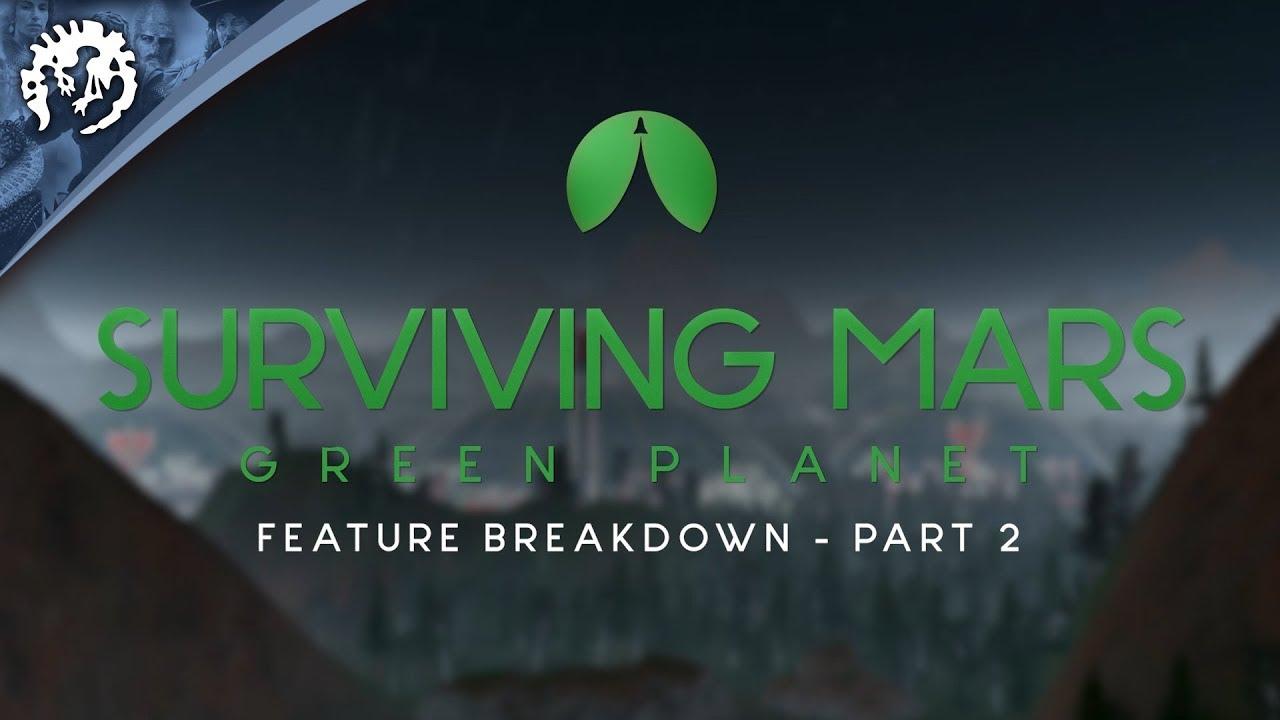
Direct Link
For an overview of what to expect for those who can't watch the video, see the details below.
Green Planet will include:
- Terraforming: Terraform Mars and make the hostile planet habitable for humanity. Each decision you make while managing your colony can affect the Terraforming Parameters, which includes Atmosphere, Temperature, Water, and Vegetation, and ideally brings them closer to habitable levels. Monitor your progress on a planetary scale with the Planetary Overview UI. Once you’ve made the atmosphere breathable, open the domes and let your colonists breathe Martian air!
- Green Mars: Seed the surface of Mars with various lichen, grass, shrubs, or trees and watch as they begin to turn the Red Planet green. Low maintenance plants like Lichen can improve the soil quality to help more complex plants grow while Trees produce high seed yields for your colony to harvest. Be sure to monitor your soil quality levels to keep your plants healthy and growing.
- Special Projects: Take on seven challenging Special Projects like melting the polar caps, capturing ice asteroids, launching a space mirror, and more to begin shifting the Terraforming Parameters. Be careful, these projects will have a lasting impact on the planet and will trigger natural disasters!
- 7 New Terraforming Buildings: Construct seven new buildings that can help you terraform the planet or capitalize on the changes. Use the GHG factory to release greenhouse gasses into the atmosphere, the Forestation Plant to boost vegetation production, the Water Pump to fill a man-made lake bed, and more.
- Climate Calamities: Terraforming a planet can have unexpected consequences. If you release too many greenhouse gasses into the atmosphere you can trigger acid rain which reduces soil quality, or if an asteroid slams into the planet it will cause a Marsquake that can disrupt your colony’s production.
Project Laika will include:
- Animal Farm: Breed up to eight different farm animals in the Martian Pastures including Cows, Chickens, Pigs, and more. Farm animals can be raised for food in the new In-Dome Ranches or Outside Ranches, depending on their size, and consume more water than crops.
- Martian’s Best Friend: Animal Pack features 25 different pets, ranging from your usual suspects like cats, dogs, and rabbits to some unexpected critters like llamas, penguins, platypuses. Once you terraform the planet enough, pets will go outside to explore nearby bushes and trees.
Green Planet will be $19.99 at release and Project Laika will be $5.99, with Green Planet pre-orders now up but it seems you can only do so on the Paradox Store (not that we ever recommend pre-ordering anything!). The actual release will be across the usual stores like Humble Store, GOG and Steam on May 16th.
I'm incredibly happy to see Surviving Mars continue to expand, although it's a little odd to have two different packs come out at the same time like this. I'm assuming it's due to different teams working on different things and supporting games long-term does need funding, especially when it's bigger stuff like this. Personally, I think it all sounds pretty great.
YES YES, I know its only a game, I just hope we don't get a generation of idiots thinking things like this are a good idea :/
It all depends on the circumstances. When space is limited, you are basically spending energy to replenish soil. When space is abundant, you can use animals for a similar thing.
So compared to humans, they are insanely expensive to keep for the sake of some milk and maybe meat down the line :)
A case can be made for chickens however.
Last edited by TheRiddick on 25 Apr 2019 at 4:05 pm UTC
But I need to repeat myself. If you want to use your current soil on max, you need to somehow pump stuff into it. Its common sense if you realize that by growing stuff and taking it away, you are essentially removing stuff from soil, as its not just carbon from air and energy from sun. So you need to use some fertilizers to return all those other elements into soil. Currently, we use fertilizers, which are mined from natural deposits (guano) or made chemically from minerals.
If you however have a lot of free land, you can use less space efficient method: crop rotation, leaving soil without produce to recuperate or making pasture on it. Depending on composition of your soil, you might not be able to even produce reasonable products without fertilizers, as the soil composition can be very poor on some elements. But you could still be able to have some sheep or cattle on it.
Given that cattle can take care of itself for most of the time, it might be an ideal thing to do ONCE planet is terraformed. Like in Firefly!
Don't also forget that plants do produce a lot of waste that us humans cannot metabolize. Thats why a lot of places had rabbits, chickens or pigs. It would go to waste anywhere and pre-processing in these animals can increase the rate of decomposition. Unless you have something else, like some bugs or worm farms.
Finally, this point is kind of bull anyway, game already has casinos, supermarkets, luxury stores, everyone lives in spacious housing with gardens, there are universities, office buildings and god knows what else. Non of these would be there during serious planet colonization anyway. So complaining about how pigs and cows are inefficient is kind of out of picture.
Last edited by Colombo on 25 Apr 2019 at 5:34 am UTC
In medieval times, there was no outside source of fertilizer, the soil had to be enriched from within the agricultural cycle itself. And the population was generally much lower. Maximizing food per land unit wasn't such a big thing; what was efficient was maintaining the soil's fertility. So you'd see animals used partly for meat, partly to crap all over the land and fertilize it. Between that and crop rotation involving nitrogen-fixing plants you could fertilize the soil adequately.
Even so, when populations rose and the land got over-used, you'd see the mix move towards more plants and fewer animals (and soil heading for exhaustion). But then after the Black Death, with very low populations, the key limit was suddenly labour and there was plenty of land. At that point, what was efficient was often herds of sheep rambling around otherwise fallow land, because sheep herding required quite a bit of land but little labour.
So what's efficient depends what you're maximizing and what you have a shortage of.
On a new Mars colony you would have pretty much unlimited land, so animals being inefficient in land use wouldn't be an issue. But land is not topsoil, and you might not have a ready source of chemical fertilizers, in which case animals being efficient at pooping might be quite important. So having animals might be silly, but I don't think you can write them off too easily.
Right now on earth, with a huge population and an agricultural system that relies on artificial fertilizer, our big limit is arable land, so you want to maximize food value per unit of land and we get lots of very sound arguments about reducing meat.
You are wrong here. We got plenty of arable land. We are often building cities and factories on prime soil. At least in developed countries. Problem with undeveloped countries is, well, they are undeveloped. With that comes tonne of problems, like bad waste management, pollution, weak democracy and other stuff. Problem with the arable land that we currently have is its management, erosion and the fact that some agricultural methods are not sustainable, both with respect to nutrients in soil and water management.
So I disagree about reducing meat consumption being problem. There are huge efficiency problems that needs to be solved soon, like transporting food over vast distances or other stuff. Meat is marginal problem. And even then, the rotation of produce works on large scale as well, not just only on small farms in past. What do you think happens with low quality corn or grain that is unsuitable for human consumption? You could throw it away, or you could sell it with a discount to animal farms.
What do you think happens with low quality corn or grain that is unsuitable for human consumption? You could throw it away, or you could sell it with a discount to animal farms.
You can make bio-fuels or turn it into fertiliser/compose also. But in reality plants would be grown via hydroponics on Mars, the martian soil is likely going to have nasties in it that kill plant growth and certainly would kill animals. (radiation anyone?)
It be a whole lot of work, likely a colony even super advanced one would stick with hydroponics and synthetic meats indefinitely. Even if by some miracle you converted the atmosphere to breathable, doesn't fix the soil.
Cows eat 1200 pounds a day btw!
That's how much they weigh, not how much they eat. They eat between 28 and 32 pounds of hay per day.
Source: https://beef.unl.edu/cattleproduction/forageconsumed-day
If there's a city on it, we don't "have" it for agricultural use. And just because we're doing dumb things with our land doesn't mean we have a major surplus. You can tell there's a lot of pressure on the available land because so much marginal land has been brought into cultivation and so much land that probably shouldn't be cleared for agriculture is constantly being cleared. Sure, part of the reason is there's a lot of inefficiencies, but there are always a lot of inefficiencies; saying "we would have enough X if we were 100% efficient in its use" is very different from saying "We have enough X".Right now on earth, with a huge population and an agricultural system that relies on artificial fertilizer, our big limit is arable land, so you want to maximize food value per unit of land and we get lots of very sound arguments about reducing meat.
You are wrong here. We got plenty of arable land. We are often building cities and factories on prime soil.
Problem with the arable land that we currently have is its management, erosion and the fact that some agricultural methods are not sustainable, both with respect to nutrients in soil and water management.Those are certainly big problems, I have no argument there, but not the only ones.
So I disagree about reducing meat consumption being problem. There are huge efficiency problems that needs to be solved soon, like transporting food over vast distances or other stuff. Meat is marginal problem. And even then, the rotation of produce works on large scale as well, not just only on small farms in past. What do you think happens with low quality corn or grain that is unsuitable for human consumption? You could throw it away, or you could sell it with a discount to animal farms.Again, I have no argument with a lot of that stuff--all those problems you're talking about, I'm totally on board with you.
But apparently one third of all croplands worldwide are dedicated to livestock feed production (and in the US, it's actually two thirds), so I wouldn't say that was marginal. Worldwide a lot of livestock graze on land that couldn't be used for farming crops anyway, so there's no point getting rid of that, but the first-world intensive feedlot operations are pretty unsustainable stuff--and they don't use the kind of leftovers you're talking about, they use purpose-grown feed. The kind of leftovers you're talking about mostly do get thrown away, which is another problem for sure.
Last edited by Purple Library Guy on 25 Apr 2019 at 5:55 pm UTC
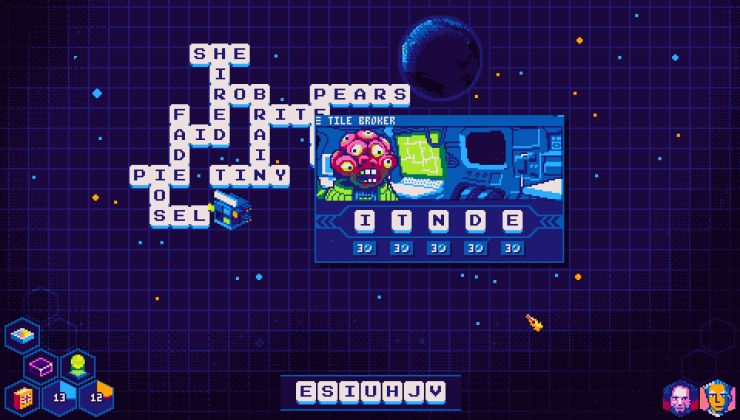
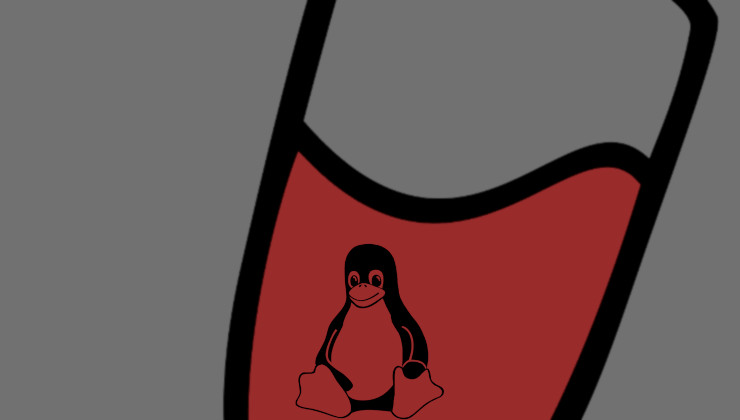
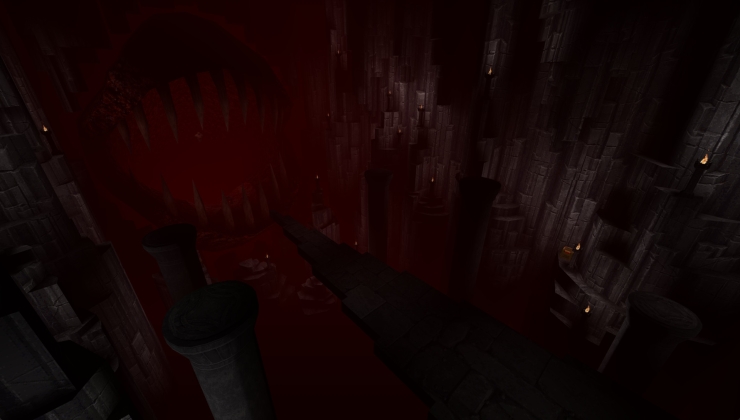
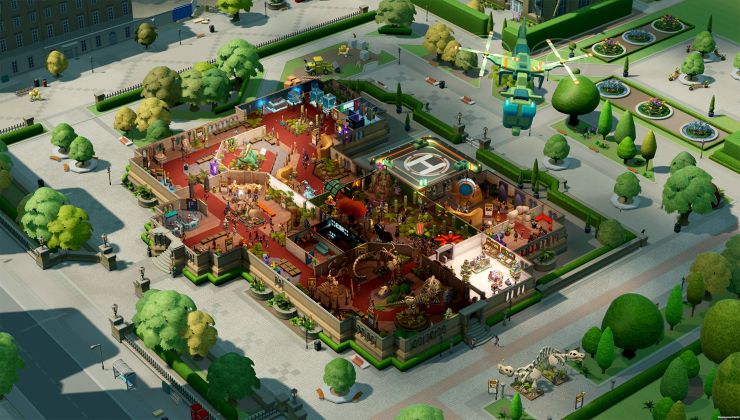




 How to set, change and reset your SteamOS / Steam Deck desktop root password
How to set, change and reset your SteamOS / Steam Deck desktop root password How to set up Decky Loader on Steam Deck / SteamOS for easy plugins
How to set up Decky Loader on Steam Deck / SteamOS for easy plugins
See more from me